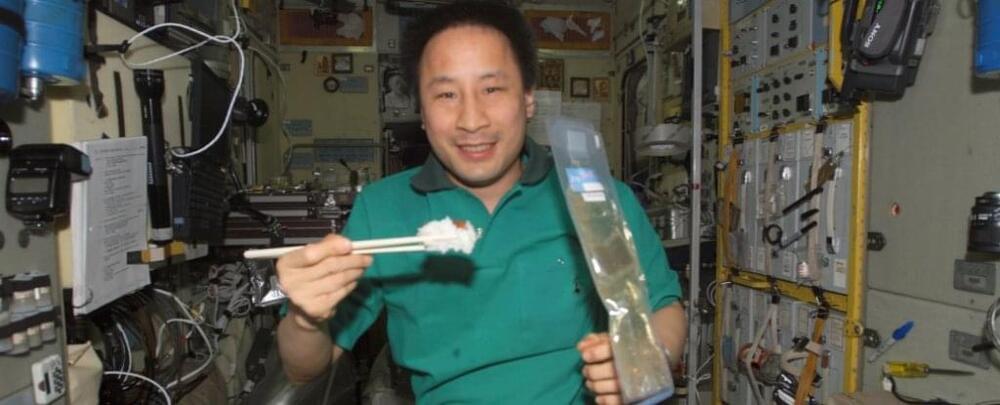Jan 13, 2023
HelloScribe: Bring Your Best Ideas to Life
Posted by Kelvin Dafiaghor in category: robotics/AI
HelloScribe’s powerful AI writing and brainstorming tools help Marketing, Advertising, and PR Professionals to do their best work 10x faster.
HelloScribe’s powerful AI writing and brainstorming tools help Marketing, Advertising, and PR Professionals to do their best work 10x faster.

Victoria Krakovna is a Research Scientist at DeepMind working on AGI safety and a co-founder of the Future of Life Institute, a non-profit organization working to mitigate technological risks to humanity and increase the chances of a positive future. In this interview we discuss three of her recent LW posts, namely DeepMind Alignment Team Opinions On AGI Ruin Arguments, Refining The Sharp Left Turn Threat Model and Paradigms of AI Alignment.
Transcript & Audio: https://theinsideview.ai/victoria.
Continue reading “Victoria Krakovna–AGI Ruin, Sharp Left Turn, Paradigms of AI Alignment” »
Biorealistic organic electrochemical neurons enabled by ion-tunable antiambipolarity in mixed ion-electron conducting polymers.
An artificial organic neuron that closely mimics the characteristics of biological nerve cells has been created by researchers at Linköping University (LiU), Sweden. This artificial neuron can stimulate natural nerves, making it a promising technology for various medical treatments in the future.
Work to develop increasingly functional artificial nerve cells continues at the Laboratory for Organic Electronics, LOE. In 2022, a team of scientists led by associate professor Simone Fabiano demonstrated how an artificial organic neuron could be integrated into a living carnivorous plant to control the opening and closing of its maw. This synthetic nerve cell met 2 of the 20 characteristics that differentiate it from a biological nerve cell.
A common idea that our creativity is what makes us uniquely human has shaped society but strides of progress made in the domain of Generative Artificial Intelligence question this very notion. Generative AI is an emerging field that involves the creation of original content or data using machine learning algorithms.
As we think about a future where humans and AI partner in iterative creative cycles, we consider how generative AI could impact current businesses and possibly create new ones. Up until recently, machines were relegated to analysis and cognitive roles, but today algorithms are improving at generating original content. These technologies are iterative in principle, one is built on top of the last one, and each new iteration enhances the algorithm and increases the potential for discovery exponentially.
The technology presents itself as a more refined and mature breed of AI that has sent investors into a frenzy and among all this emerges a clear market leader — OpenAI. Its flagship products-ChatGPT and DALL-E proved to be industry disruptors and brought generative AI tools to the masses. DALL-E allows people to generate and edit photo-realistic images simply by describing what they want to see, while ChatGPT does the same through a text medium.
Year 2022 face_with_colon_three
The UK government is supporting projects to put solar panels in space and beam energy back to Earth.
The early 20th century saw the advent of quantum mechanics to describe the properties of small particles, such as electrons or atoms. Schrödinger’s equation in quantum mechanics can successfully predict the electronic structure of atoms or molecules. However, the “duality” of matter, referring to the dual “particle” and “wave” nature of electrons, remained a controversial issue. Physicists use a complex wavefunction to represent the wave nature of an electron.
“Complex” numbers are those that have both “real” and “imaginary” parts—the ratio of which is referred to as the “phase.” However, all directly measurable quantities must be “real”. This leads to the following challenge: when the electron hits a detector, the “complex” phase information of the wavefunction disappears, leaving only the square of the amplitude of the wavefunction (a “real” value) to be recorded. This means that electrons are detected only as particles, which makes it difficult to explain their dual properties in atoms.
The ensuing century witnessed a new, evolving era of physics, namely, attosecond physics. The attosecond is a very short time scale, a billionth of a billionth of a second. “Attosecond physics opens a way to measure the phase of electrons. Achieving attosecond time-resolution, electron dynamics can be observed while freezing molecular motion,” explains Professor Hiromichi Niikura from the Department of Applied Physics, Waseda University, Japan, who, along with Professor D. M. Villeneuve—a principal research scientist at the Joint Attosecond Science Laboratory, National Research Council, and adjunct professor at University of Ottawa—pioneered the field of attosecond physics.

Year 2015 😀
The food that will sustain future generations as we colonise our way across space may be none other than our own sh*t, if a new NASA-funded project is successful.
Continue reading “NASA’s Given Researchers $200,000 to Turn Human Poop Into Food” »
Startups implementing generative AI are already attracting big, early-stage rounds at hefty valuations — with little evidence they can become profitable.
Year 2022 face_with_colon_three
Researchers have designed smart, color-controllable white light devices from quantum dots – tiny semiconductors just a few billionths of a meter in size – which are more efficient and have better color saturation than standard LEDs, and can dynamically reproduce daylight conditions in a single light.
The researchers, from the University of Cambridge, designed the next-generation smart lighting system using a combination of nanotechnology, color science, advanced computational methods, electronics, and a unique fabrication process.
Fungi such as Aspergillus are so common in our surroundings that we breathe in hundreds to thousands of spores every day. In healthy people, fungi typically pose no threat, but they can cause deadly infections in those with compromised immune systems. However, it is increasingly recognized that viral infections such as influenza or SARS-CoV-2 can increase the risk of invasive Aspergillus infections even in healthy people.
The World Health Organization (WHO) has stated that invasive fungal infections are an increasing threat to human health and has reiterated that more research is needed. Until now little was known about how the Aspergillus fungus was able to take root, and what could be done to get rid of it. Researchers at the University of Calgary working with researchers at McGill University have provided new insight on why the immune system fails.
“We discovered that influenza and COVID-19 destroy a previously unknown natural immunity that we need to resist invasive fungal infections,” says Nicole Sarden, a Ph.D. candidate at the University of Calgary and first author on the study.